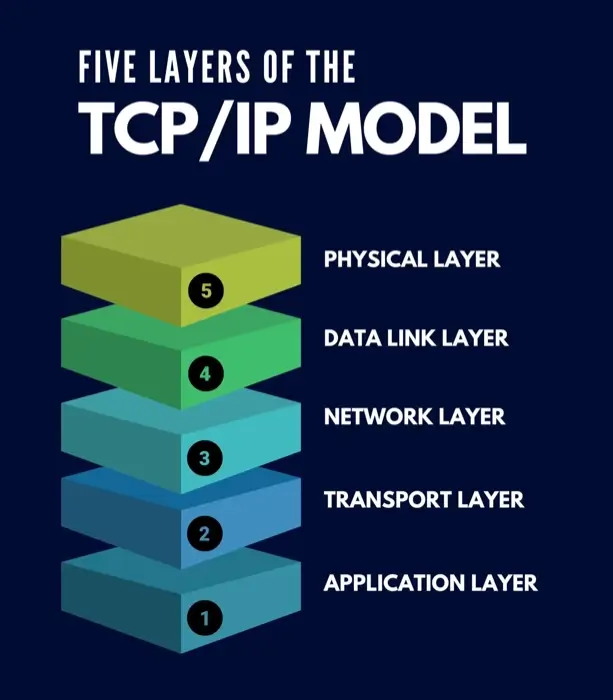Network Protocols, OSI Model & TCP/IP Explained Simply
 Aman Srivastav
Aman SrivastavWhat are Network Protocols?
Network protocols are like the languages or rules that computers use to talk to each other over a network (like the internet).
They define:
📤 How data is sent
📥 How data is received
🔒 How it's secured
📦 How it's structured
Real-life analogy:
Imagine two people having a conversation in the same language — if both follow the same grammar and vocabulary, they understand each other.
That's exactly what protocols do for devices.
Why Do Protocols Matter?
Without protocols:
Devices wouldn't understand each other.
Data might get lost, corrupted, or arrive in the wrong order.
The internet simply wouldn’t work.
Protocols ensure:
🔁 Reliable communication
⚖️ Orderly data transfer
🔐 Security
🔎 Error checking and correction
OSI Model: The 7 Layers of Networking

| Layer No | Layer Name | What It Does | Examples |
| 7 | Application | User interaction | HTTP, FTP, SMTP |
| 6 | Presentation | Data formatting (encryption, compression) | SSL/TLS, JPEG |
| 5 | Session | Start/end communication sessions | NetBIOS, RPC |
| 4 | Transport | Reliable delivery, error checking | TCP, UDP |
| 3 | Network | Routing & addressing | IP, ICMP |
| 2 | Data Link | Data transfer between devices on the same network | Ethernet, MAC |
| 1 | Physical | Raw bits over cables/wireless | Cables, Wi-Fi, Bluetooth |
TCP/IP Basics: The Real Backbone of the Internet
While OSI is theoretical, the TCP/IP model is what we actually use.
📦 What is TCP/IP?
TCP/IP stands for:
TCP = Transmission Control Protocol
IP = Internet Protocol
Together, they are the core protocols that power data transfer on the internet.
IP breaks data into chunks (called packets) and assigns addresses (like ZIP codes).
TCP makes sure:
Packets are delivered in the correct order
Nothing is missing
Data is reassembled correctly
So even if you're streaming, emailing, or downloading — TCP/IP is making sure your data reaches safely and in full.

TCP/IP Model – 5 Layers Explained Simply
1. Application Layer
📱 What it does: This is the layer you interact with.
🧠 Purpose: Provides network services to applications (like browsers, email, FTP).
🛠 Examples: HTTP, HTTPS, FTP, SMTP, DNS
2. Transport Layer
🔁 What it does: Manages end-to-end communication.
📦 Purpose: Ensures data is delivered completely, correctly, and in order.
🛠 Protocols: TCP (reliable), UDP (faster but no guarantee)
3. Internet Layer
🌍 What it does: Handles routing and addressing.
📦 Purpose: Sends data from your device to the correct destination IP.
🛠 Protocols: IP (IPv4, IPv6), ICMP (used for tools like ping)
4. Data Link Layer
📡 What it does: Deals with device-to-device communication on the same network.
📦 Purpose: Converts packets into frames; adds MAC address info.
🛠 Examples: Ethernet, Wi-Fi, ARP
5. Physical Layer
🔌 What it does: Sends raw bits (0s and 1s) over cables or wireless.
📦 Purpose: Deals with actual hardware – signals, cables, radio waves.
🛠 Examples: Cables, switches, network cards, Wi-Fi signals
Subscribe to my newsletter
Read articles from Aman Srivastav directly inside your inbox. Subscribe to the newsletter, and don't miss out.
Written by
